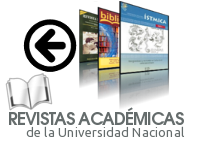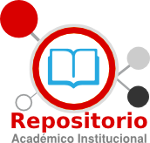Aprendizaje Basado en el Lugar (ABL) y el aprovechamiento de la experiencia cotidiana: revisión de una propuesta didáctica de trabajo de campo para aprender Geografía
DOI:
https://doi.org/10.15359/rp.27.5Palabras clave:
Aprendizaje Basado en el Lugar, aprendizaje, educación geográfica, Estudios Sociales, percepción ambiental, trabajo de campoResumen
Con el propósito de fortalecer el desarrollo de habilidades geográficas en la población estudiantil, se presenta el diseño y aplicación de la estrategia “Pausa Activa: ¡A leer el espacio!”, fundamentada en el Aprendizaje Basado en el Lugar (ABL). La estrategia propone validar las relaciones que ha construido el estudiantado con su entorno inmediato y trasladarlas al escenario de aprendizaje académico; de esta manera, se reconoce una oportunidad para evaluar la comprensión de los contenidos curriculares revisados durante la clase y posicionar al estudiantado como agente de construcción y transformación de su territorialidad. La propuesta identificó un rol estudiantil que le convierte en activo y necesario y un rol docente de orientación y acompañamiento, donde la evaluación formativa toma especial protagonismo en un escenario de flexibilidad curricular innegable, al entender que las lecturas espaciales se realizan desde la autonomía y experiencia inmediata del estudiantado.
Referencias
Bednarz, R. & Bednarz, S. W. (2004). “Geography education: the glass is half full and it’s getting fuller”. The Professional Geographer, 56(1), 22-27. https://doi.org/10.1111/j.0033-0124.2004.05601004.x
Commission on Geographical Education – IGU-CGE. (2016). Declaración Internacional sobre Educación Geográfica. International Geographical Union (Unión Geográfica Internacional).
Fernández, Y. (2008). “¿Por qué estudiar las percepciones ambientales? Una revisión de la literatura mexicana con énfasis en Áreas Naturales Protegidas”. Espiral, 15(43). http://www.scielo.org.mx/scielo.php?script=sci_arttext&pid=S1665-05652008000100006
González, M., Vera, J. & Hernández, S. (2021). “Estudio de la percepción ambiental geográfica de la contaminación de un arroyo urbano, Tonalá, Chiapas”. Región y Sociedad, 33(e1510). https://doi.org/10.22198/rys2021/33/1510
Gruenewald, D. (2008). “The best of both worlds: a critical pedagogy of place”. Environmental Education Research, 14(3), 308-324. https://doi.org/10.1080/13504620802193572
Heffron, S. & Downs, R. (Ed.). (2012). Geography for Life: National Geography Standards. National Council for Geographic Education -NCGE.
Langran, E. & DeWitt, J. (2020). Navigating Place-Based Learning. Mapping for a Better World. Palgrave Macmillan. https://doi.org/10.1007/978-3-030-55673-0
Lipp, D. (2016). Principios de la Geografía. Actas Congreso Internacional de Geografía - 77º. Sociedad Argentina de Estudios Geográficos -GAEA.
Ontong, K. & Le Grange, L. (2016). “Reconceptualising the Notion of Place in School Geography”. Geography, 101, 137-145. https://doi.org/10.1080/00167487.2016.12093997
Oviedo, G. (2004). “La definición del concepto de percepción en psicología con base en la teoría Gestalt”. Revista de Estudios Sociales, (18), 89-96. https://www.redalyc.org/articulo.oa?id=81501809
Owen-Smith, P. (2017). “Reclaiming Interiority as Place and Practice”. En: D. Shannon y J. Galle (Eds.), Interdisciplinary Approaches to Pedagogy and Place-Based Education. From Abstract to the Quotidian. Palgrave Macmillan. https://doi.org/10.1007/978-3-319-50621-0
Preston, L. (2015). “The Place of place-based education in the australian primary geography curriculum”. Geographical Education, (28), 41-49. https://eric.ed.gov/?id=EJ1085985
Shannon, D. & Galle, J. (2017). “Where We Are: Place, Pedagogy, and the Outer Limits”. En: D. Shannon y J. Galle (Eds.), Interdisciplinary Approaches to Pedagogy and Place-Based Education. From Abstract to the Quotidian. Palgrave Macmillan. https://doi.org/10.1007/978-3-319-50621-0
Sobel, D. (2004). Place-Based Education: Connecting Classrooms and Communities. The Orion Society.
Sobel, D. (2014). “Place-Based Education: Connecting Classrooms and Communities. Closing the Achievement Gap: The SEER Report”. NAMTA Journal, 39(1), 61-78. https://eric.ed.gov/?id=EJ1183171
Woodhouse, J. y Knapp, C. (2000). “Place-based curriculum and instruction: outdoor and environmental education approaches”. ERIC Digest, 1-8. https://eric.ed.gov/?id=ED448012
Publicado
Cómo citar
Número
Sección
Licencia
Los autores que publican en esta revista están de acuerdo con los siguientes términos:
a) Los autores conservan los derechos de autor y garantizan a la revista el derecho de ser la primera publicación del trabajo bajo una Licencia Creative Commons Atribución-NoComercial-CompartirIgual 4.0 Internacional (https://creativecommons.org/licenses/by-nc-sa/4.0/) que permite a otros compartir el trabajo con un reconocimiento de la autoría del trabajo y la publicación inicial en esta revista (componente BY o atribución). Coincidente con la política de Acceso Abierto, no se podrán hacer usos comerciales de los contenidos publicados por esta revista (componente NC). Se permitirán las obras derivadas (remezcla, transformación o creación a partir de la obra original) siempre y cuando sean distribuidas bajo la misma licencia de la obra original (componente SA).
b) Los autores pueden establecer por separado acuerdos adicionales para la distribución no exclusiva de la versión original de la obra publicada en la revista (por ejemplo, situarlo en un repositorio institucional o publicarlo en un libro), siempre y cuando: a) sea reconocida la publicación original en esta revista (componente BY); b) no se haga uso del material de reuso con propósitos comerciales (componente NC); c) el material de reuso sea distribuido bajo la misma licencia de la obra original (componente SA).
c) Se permite y se anima a los autores a difundir sus trabajos electrónicamente (por ejemplo, en repositorios institucionales o en su propio sitio web) antes y durante el proceso de envío, ya que puede dar lugar a intercambios productivos, así como a una citación más temprana y mayor de los trabajos publicados (Véase The Effect of Open Access) (en inglés).


_11.55_.09_a_._m_._.png)
_1.34_.01_p_._m_._2.png)
_9.45_.02_p_._m_._.png)




_2.23_.09_p_._m_._.png)
_2.35_.17_p_._m_._.png)

